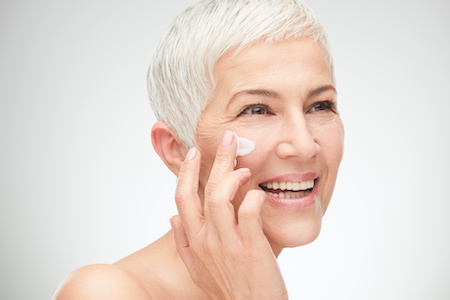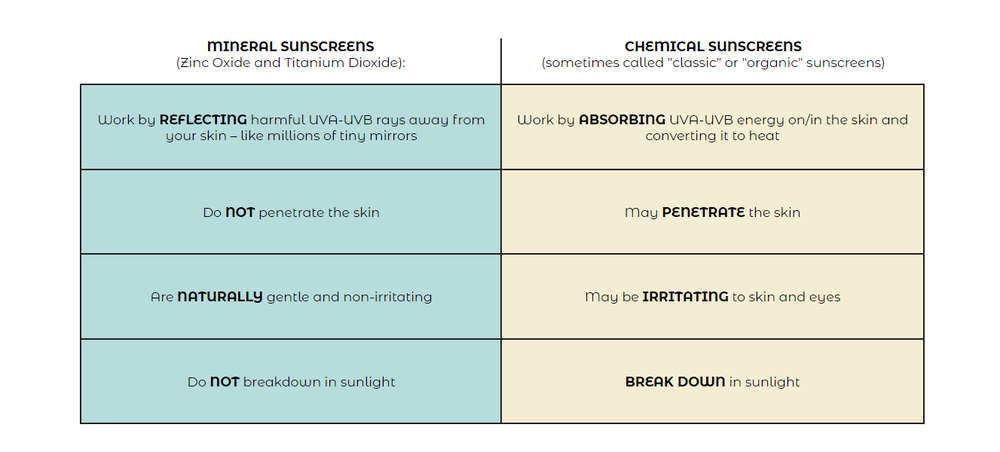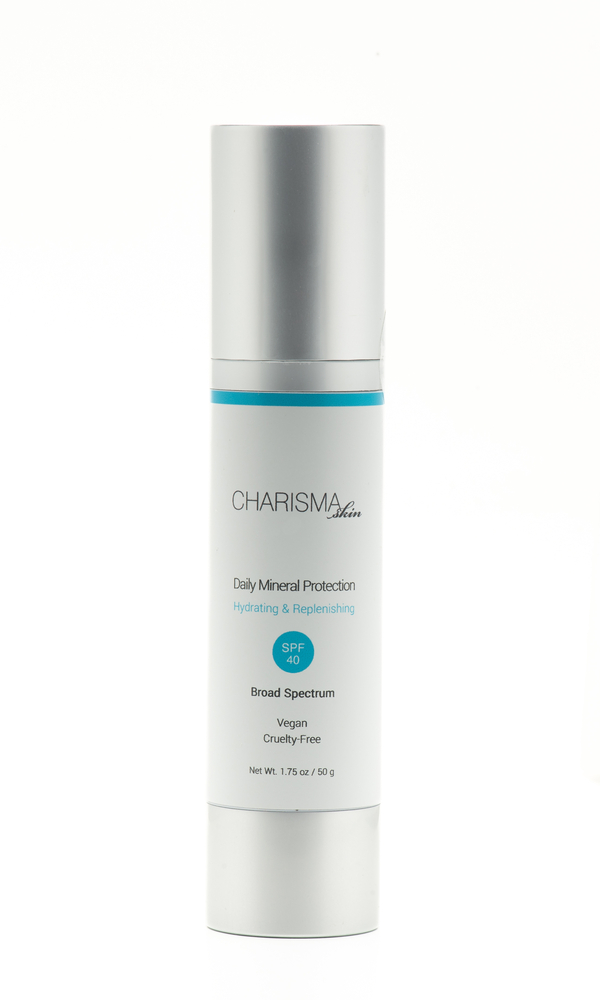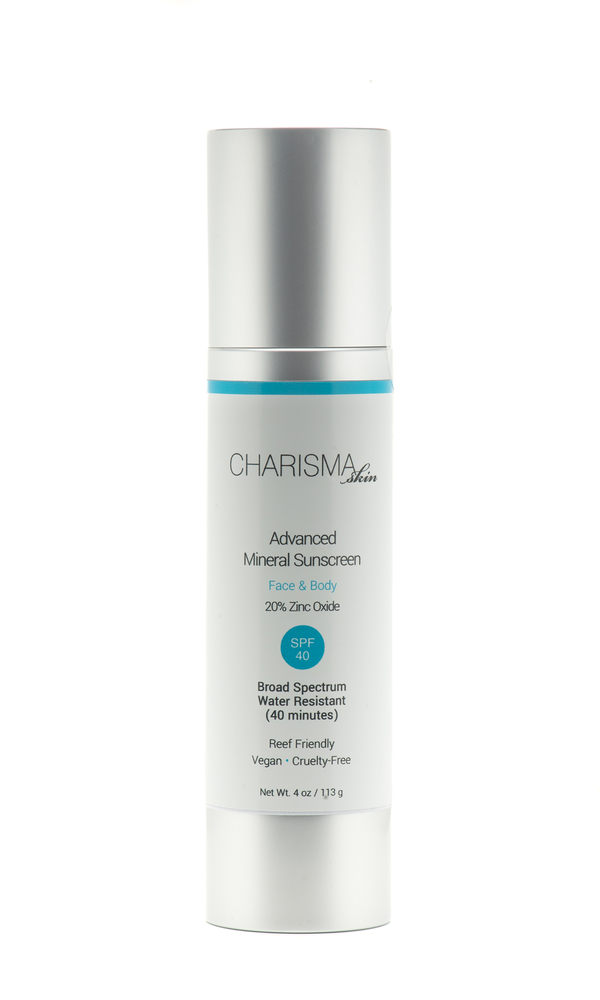Mineral vs. Chemical Sunscreens
 You're most likely aware that sunscreen is an essential part of any good skin care regimen to help protect your skin from the sunís UV rays. Itís also common knowledge that the sunís rays can cause pre-mature aging, dark spots and skin cancer, but do you know the difference between the types of sunscreens?
You're most likely aware that sunscreen is an essential part of any good skin care regimen to help protect your skin from the sunís UV rays. Itís also common knowledge that the sunís rays can cause pre-mature aging, dark spots and skin cancer, but do you know the difference between the types of sunscreens?
There are two types of sunscreens: Mineral barrier (also known as physical barrier) and chemical barrier sunscreens. Mineral sunscreen ingredients include: Zinc Oxide and Titanium Dioxide. Chemical sunscreen ingredients include: oxybenzone, avobenzone, octisalate, octocrylene, homosalate, and octinoxate. Hereís a quick breakdown of the differences:

Iím very excited about the two new mineral sunscreen products we introduced last month! Charisma Skinís Daily Mineral Protection SPF-40 is a daytime moisturizer and sunscreen all in one, with 16% zinc oxide as the active ingredient. It is lightweight, silky, and also contains ceramides, which help restore the skinís natural barrier.I highly recommend Daily Mineral Protection SPF-40 for anyone with normal to dry or sensitive skin, as it is replenishing and hydrating as well as provid ing mineral (physical) barrier sun protection for your skin. It does not leave a white chalky residue on skin, and Daily Mineral Protection SPF-40 is Vegan, reef-friendly and cruelty-free.
ing mineral (physical) barrier sun protection for your skin. It does not leave a white chalky residue on skin, and Daily Mineral Protection SPF-40 is Vegan, reef-friendly and cruelty-free.
Charisma Skinís new Advanced Mineral Sunscreen SPF-40 is excellent for an all over body sunscreen with 20% zinc oxide. It is also water-resistant for 40 minutes. Advanced Mineral Sunscreen SPF-40 may be used for face and body (don't forget the back of your hands) for all skin types, however you may need to apply a moisturizer before the Advanced Mineral Sunscreen SPF-40, as it is not a moisturizer. It is fairly lightweight, does not leave a white residue and is Vegan, reef-friendly and cruelty free.
 If you would like to have a sample of either of these two new products included in your next online order, please mention it in the ďCommentsĒ section at checkout.If you are a local client (Portland, Oregon area), just ask when you come in for your next service, or text or call me and I will be happy to leave a sample for you to pick up at the front desk.
If you would like to have a sample of either of these two new products included in your next online order, please mention it in the ďCommentsĒ section at checkout.If you are a local client (Portland, Oregon area), just ask when you come in for your next service, or text or call me and I will be happy to leave a sample for you to pick up at the front desk.
I cannot repeat it too often: Wear your sunscreen daily! You have incidental exposure as you and coming and going to your car, and UVA rays (that cause pre-mature aging) even penetrate through glass windows! Read on for some helpful tips from the American Academy of Dermatology:
ďYou should apply sunscreen every day on skin not covered by clothing if you will be outside. The sun emits harmful UV rays year-round. Even on cloudy days, up to 80% of the sunís harmful UV rays can penetrate the clouds.
How much sunscreen should I use, and how often should I apply it?
- Apply enough sunscreen to cover all skin not covered by clothing. Most adults need about 1 ounce ó or enough to fill a shot glass ó to fully cover their body.
- Don't forget to apply it to the tops of your feet, your neck, your ears, and the top of your head.
- Apply sunscreen to dry skin 15 minutes before going outdoors.
- Skin cancer also can form on the lips. To protect your lips, apply a lip balm or lipstick that contains sunscreen with an SPF of 30 or higher.
- When outdoors, reapply sunscreen approximately every two hours, or after swimming or sweating, according to the directions on the bottle.
Is a high-number SPF better than a low-number one?
Dermatologists recommend using a sunscreen with an SPF of at least 30, which blocks 97% of the sun's UVB rays. Higher-number SPFs block slightly more of the sun's UVB rays, but no sunscreen can block 100% of the sun's UVB rays.
It is also important to remember that high-number SPFs last the same amount of time as low-number SPFs. A high-number SPF does not allow you to spend additional time outdoors without reapplication. As many individuals only apply about 20Ė50% of the amount of sunscreen needed to achieve the amount of SPF on the label,10 application of high-SPF sunscreens helps to compensate for this under-application. Sunscreen should be reapplied approximately every two hours when outdoors, even on cloudy days, and after swimming or sweating.
Can I use the sunscreen I bought last summer, or do I need to purchase a new bottle each year? Does it lose its strength?
Dermatologists recommend using sunscreen on all skin not covered by clothing every day when you are outside, not just during the summer. If you are using sunscreen every day and in the correct amount, a bottle should not last long. If you find a bottle of sunscreen that you have not used for some time, here are some guidelines you can follow:
- The FDA requires that all sunscreens retain their original strength for at least three years.
- Some sunscreens include an expiration date. If the expiration date has passed, throw out the sunscreen.
- If you buy a sunscreen that does not have an expiration date, write the date you bought the sunscreen on the bottle. That way, youíll know when to throw it out.
- You also can look for visible signs that the sunscreen may no longer be good. Any obvious changes in the color or consistency of the product mean itís time to purchase a new bottle.
- Avoid leaving sunscreen containers under direct sunlight, or in a hot environment such as inside of the car, as this will speed up the rate that sunscreen ingredients break down."
Remember to schedule now to reserve your best time for your next facial to refresh and rejuvenate your skin, especially after time outside this Summer!
